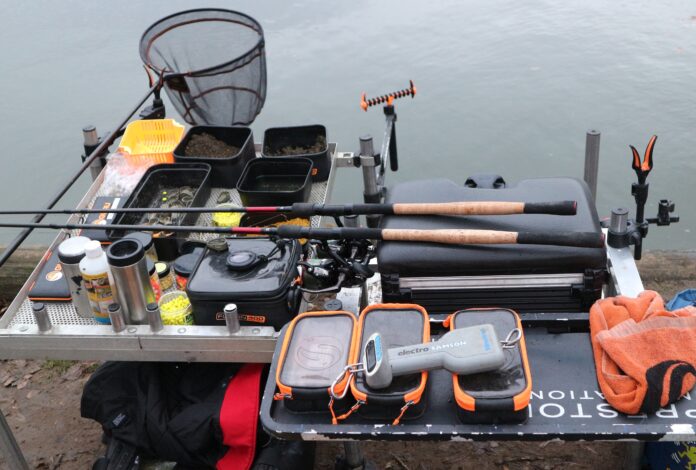MOST USED
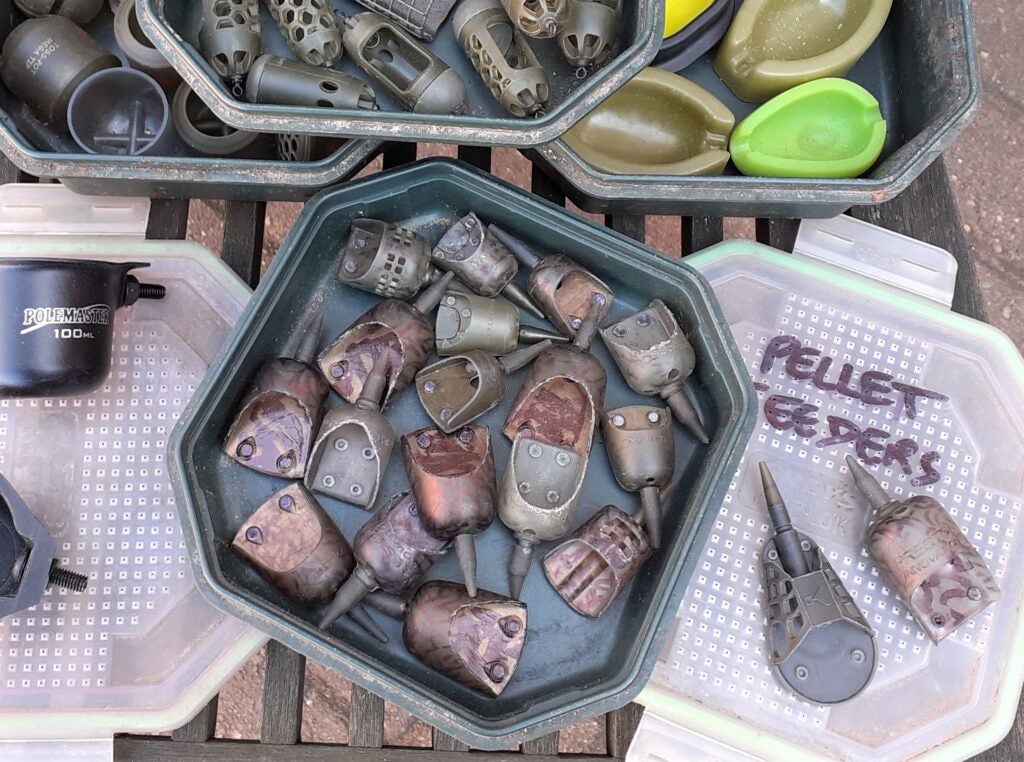

The humble bait box is not just good for keeping maggots or worms in. I use spare ones as tackle organisers, both for storage purposes and to transport vital accessories in my carryall. Having designed the top-selling Greys Klip-Lok Bait Boxes, I have a good supply of the different sizes and types, which were all early field-testing samples. I keep plenty of these boxes in my tackle room, some neatly labelled up and others with felt tip info on their lids – explaining what’s in them. It’s a great way of storing different types of feeders. If I know I only need one type, it’s easy to slip the right box in with my kit, rather than carrying around a big heavy collection. I also box up things like spare pole cups, feeder braid, mono, hooks, method moulds, shot… the list is long. I also like to take several spare bait boxes with me on outings. They come in useful for holding groundbait, casters, tinned hemp and sweetcorn, along with many other things.
HOOK SORTING
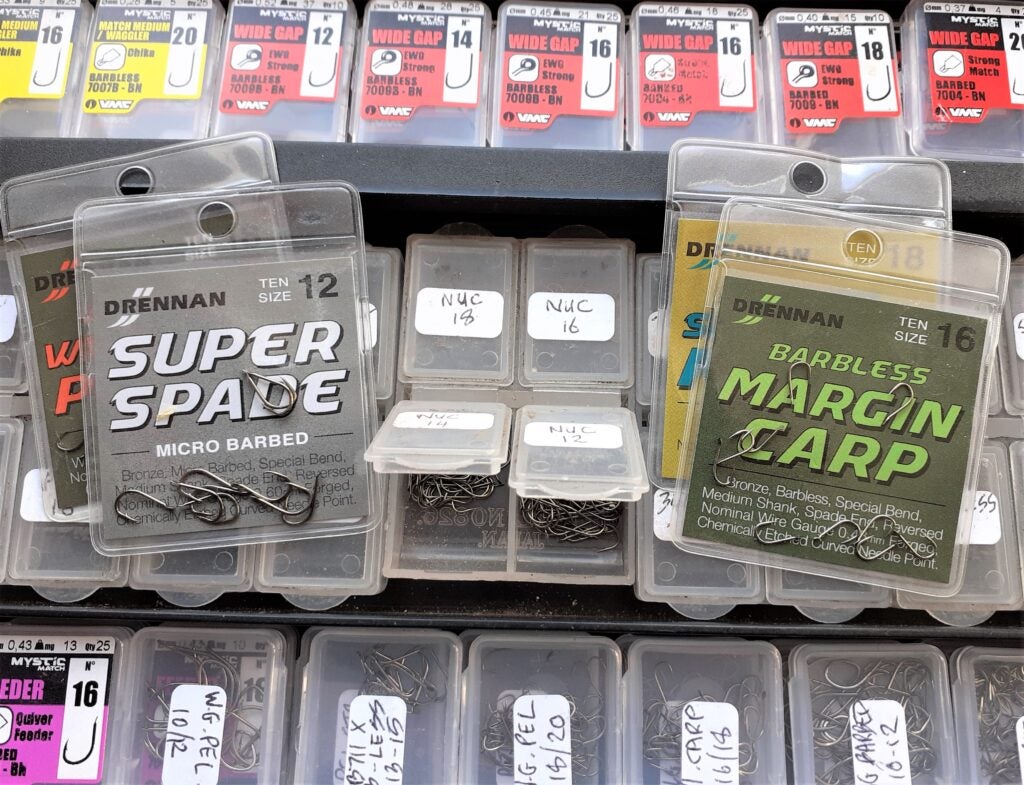

I’ve never liked keeping hooks in the plastic packets most are supplied in, finding it tricky not to spill the majority when trying to get one out, especially when out on the bank. Over the years I’ve collected many small containers to keep my hooks in, bearing in mind I carry a big collection of different models and sizes. I’ve never used magnetic hook boxes. I know these can neatly hold good quantities, but I was put off the concept by a top carp angler. He once explained that fish can sense magnetic fields, hence the reason he always used leger weights covered in a rubber coating. The theory being that when anything swam between a coated bomb and a hook, any magnetism between the two metal objects would be reduced. It got me thinking that if a hook was heavily magnetised, it might not be a good thing. Fish are highly sensitive creatures, the way they shoal up under electricity cables kind of backs up the magnetism theory.
BITS BOXES
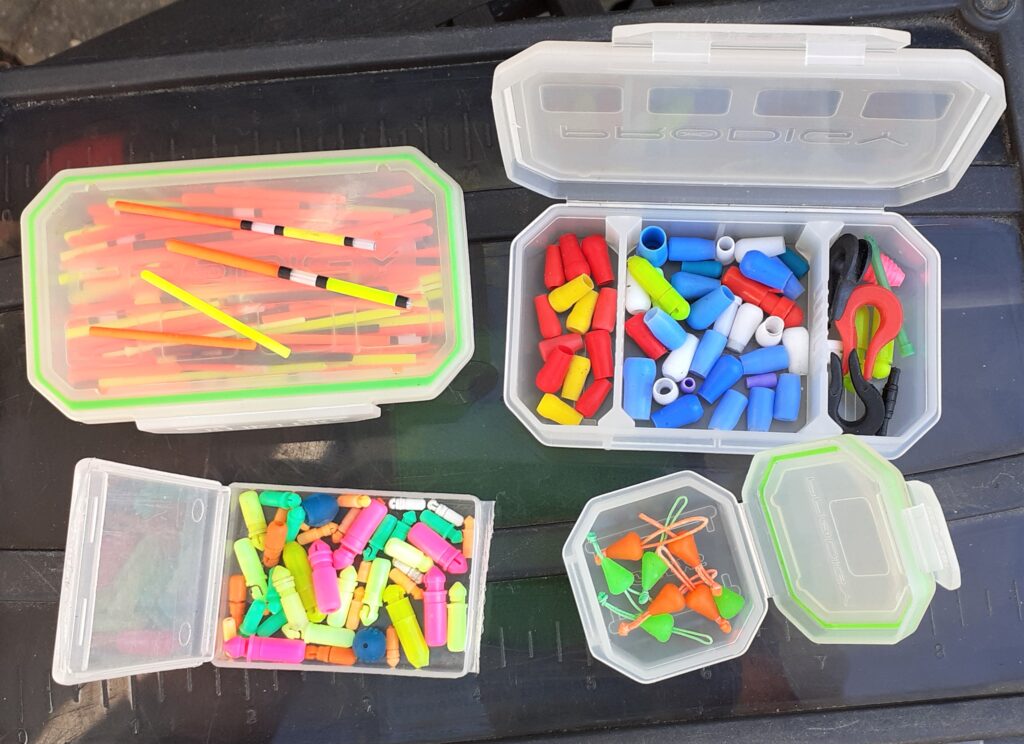

The small organiser boxes carp anglers use for storing their rig bits in are handy for coarse accessories too. I have a collection at home housing things like PTFE pole bushes, swivels, spare float tips, connectors, elastic protectors and all sorts of other gear. I carry a few of these containers in my main kit as well, finding they slot neatly into seat box drawers or the side pockets of my carryall. Rig bits boxes can even go in a jacket pocket if you do a bit of roving or travelling light. Many of these handy containers are part of modular systems, neatly stacking in the compartments of larger plastic tackle boxes. I have several of these in my tackle room, housing many bits and pieces. Being well organised helps a lot both at home and out on the bank, knowing where everything is if something needs changing. The plastic boxes, that hooks and other end tackle are supplied in, are sometimes worth keeping for storing small bits like connectors and beads.
PACKING PUNCHES
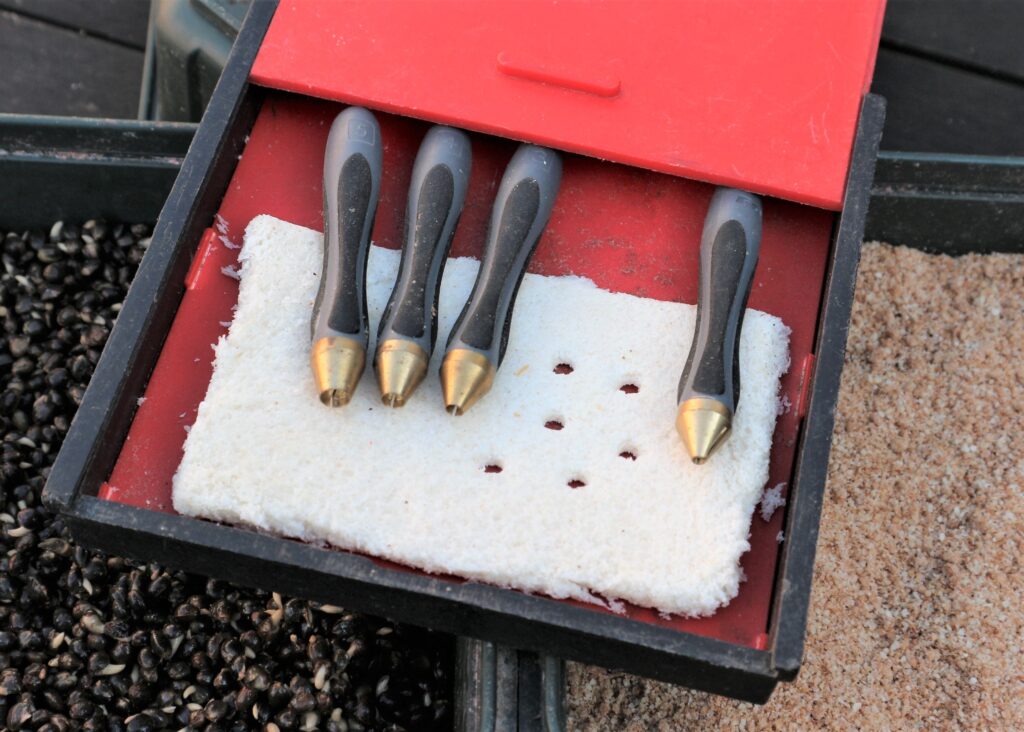

This Image Punch Box became a cult item of tackle many years ago, and was so popular it was resurrected a while back by Used Tackle. It has a sliding lid, which helps to keep a single slice of bread protected from the elements, along with just enough room to store a set of punches. When the lid is open the firm base is perfect for compressing small pellets of bread. I much prefer to use something like this, compared to a grubby bait box or a bait tray. Bread works best if it’s untainted and fresh. I also use my punch box occasionally as a handy shallow container to pick out bloodworm or soft hooker pellets; again, it keeps delicate baits like these well protected from the weather. It’s a big compliment to Image that Guru have now taken this concept a stage further with their much larger punch box, which is complimented by a set of bigger punches. They are geared up for making bigger pellets of bread, also for punching luncheon meat.
MULTI DIVISIONS
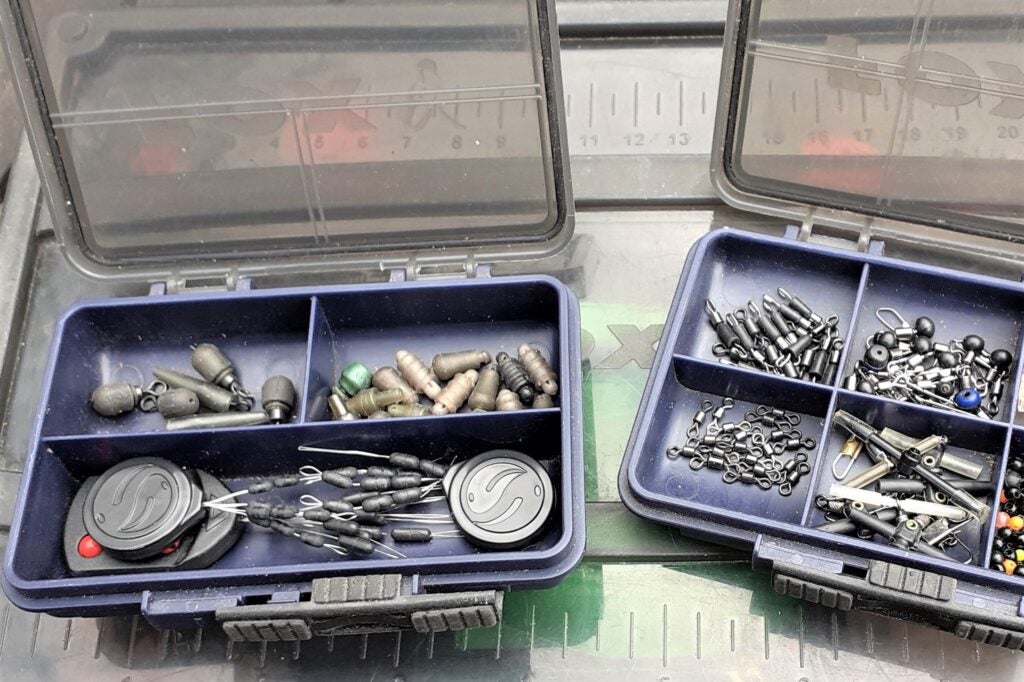

Returning to rig bits boxes and the type specimen anglers use, I highly rate the multi-compartment type, which are small, compact and easy to access. It’s amazing how much gear you can cram into these, and yet keep neatly segregated. I store several of these boxes in a drawer in my seat box, so I always have essential rig bits close to hand. One box houses micro swivels, clip beads, waggler float adaptors, mini plastic beads, quick change beads, snap swivels and loaded float adaptors. Another has quick change feeder beads, small leger weights, buffer beads, method connectors, mini plummets and line stops. A third eight-division box contains all the different diameter cut pole float silicone I need, while yet another carries many sizes and colours of float rubbers. Being highly organised like this stops tackle adjustments from wasting too much time, which from a match point of view can gain vital section or match-winning fish.
GOING LARGE
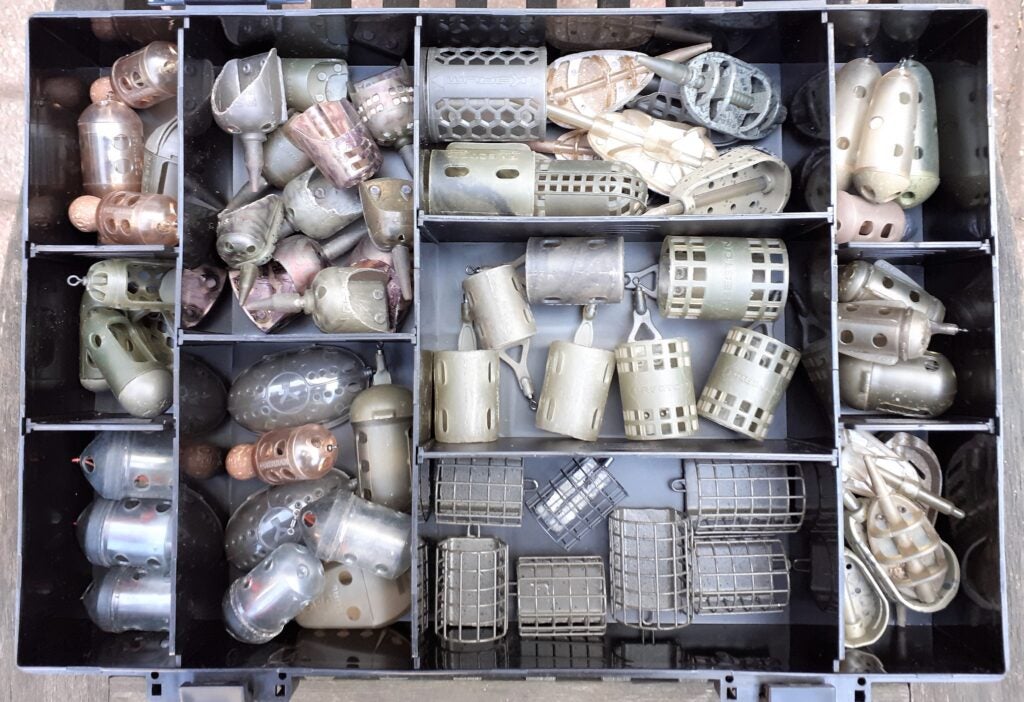

With bigger items of tackle like swimfeeders, multi-compartment box size needs to increase dramatically. I have several feeder organiser boxes, so I can rotate them into my kit if I need a particular type of feeder, such as in-line, open-end or blockend. I also have mixed assortments for venues I don’t know. I have so many feeders they have spilled over into spare bait boxes and stacked open top trays I keep on shelves in my workshop. I have never used some of these and probably won’t ever get around to attaching many to a rig, but I keep them just in case. I like modifying feeders to suit my requirements for different venues. Sometimes even old models can get a new lease of life, by cutting them back, enlarging perforations, or adding extra lead. I’m always tinkering with feeders and buying spares. It’s a good idea these days to stock up with designs and sizes you really like, because the big tackle companies often change things.
ANOTHER OPTION
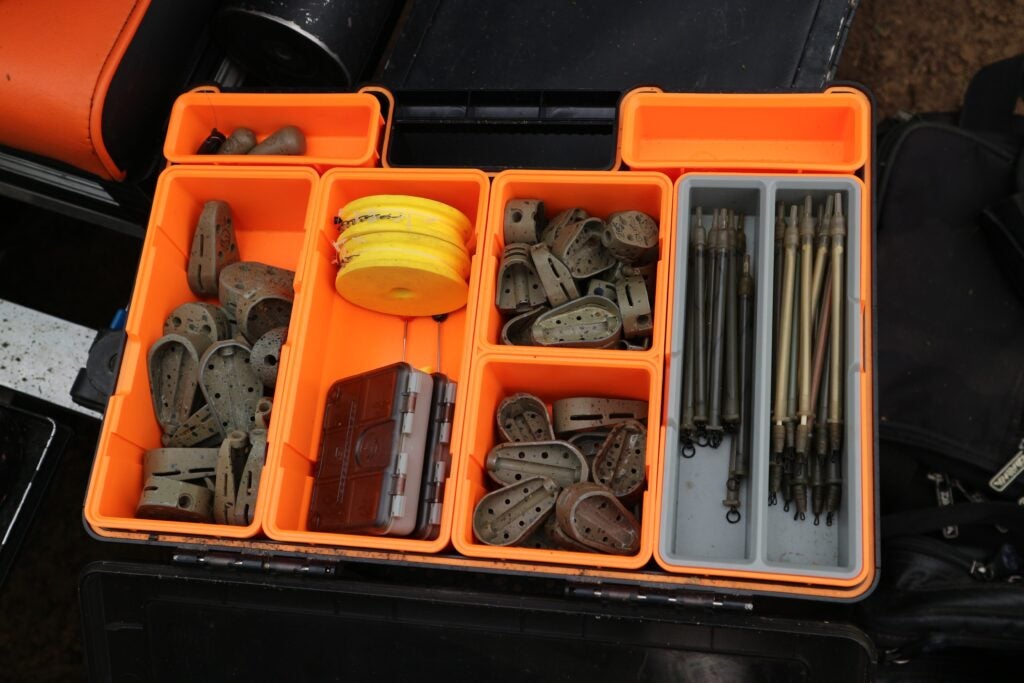

I’m always looking at what other anglers and fishing pals are using. I’ve noticed quite a few now have these Guru Feeder Boxes, which are well thought out. Apart from nicely designed compartments, they feature inserted boxes that can be pulled out and stood on a bait tray, keeping spare feeders and accessories close to hand while fishing. The compartment shapes are cleverly designed to take Guru feeders and associated bits, particularly their various tubes that fit in-line methods and hybrids. This ingenious bit of marketing means most of these boxes I come across are full to the brim with Guru feeders, tubes, leger weights, and spooled ready-tied hook lengths. Fair play! This set-up would make a great present to any feeder angler, because different inserts are available separately, allowing these boxes to be customised to suit personal requirements. I must start dropping a few hints to family and friends, now Christmas is on the horizon.
WINDOW SHOPPING
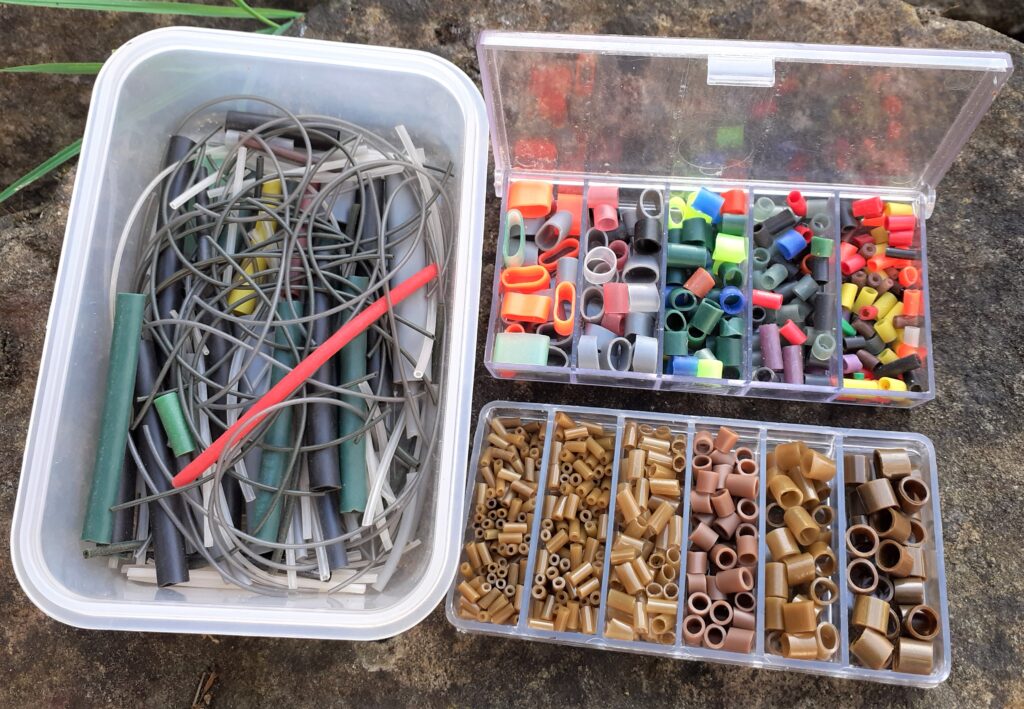

I’m always on the lookout for accessory storage boxes. You can find some great clip-lid designs very cheaply in pound shops and discount stores. I tend to use these for awkward items like silicone tubing, spare feeder leads and other similar stuff, where it doesn’t matter if everything goes in one place. But obviously with cut silicone, which evolves into float rubbers, multi-compartments are better for storage. The clear plastic, multi-division containers in the photograph came with float rubbers, but the one with a flimsy hinged lid didn’t make it into my seat box because it didn’t shut securely enough. The other similar design had a sliding lid and was secure, but still not practical. Bits of silicone stuck to the lid through static and kept jamming it up. Items like this look okay in a tackle shop or den, but better containers are required for out on the bank work. One important proviso I always look for is containers that can be opened one-handed.
BETTER DESIGNED
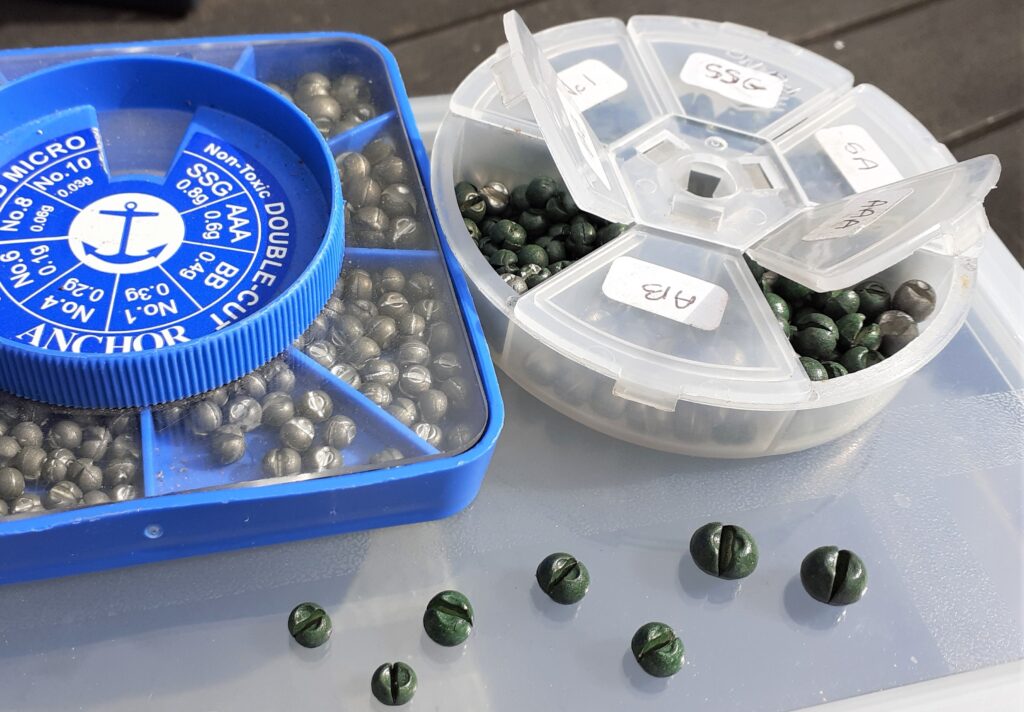

Every now and then you come across something that works for you and this unusual Plano multi-division container is a great example. I switch all my large split shot into it. The twist open turret-style container the weights are supplied in is not bad, but I prefer the flip top lids on the Plano design, which are far easier to open one-handed. This means I don’t have to put my float rod down while adjusting any shotting. I have similar hinged-top square containers I keep my most used hook designs in, because again they allow one-handed opening. This keeps things as simple as possible when I need to change something quickly. It’s also about having rig bits or accessory boxes that store lots, but don’t take up too much valuable tackle or seat box space. Being fussy and keeping essential stuff easy to find and access, is something I remember Ray Mumford was meticulous about. He was one of the top guys and hard to beat when I started match fishing.
WELL SHIELDED
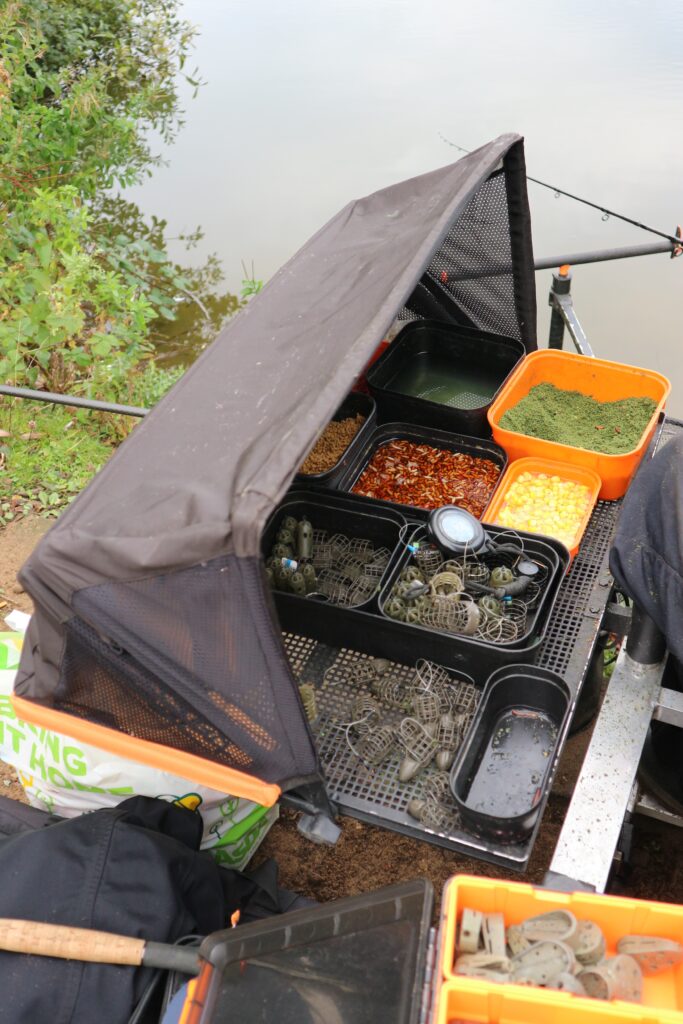

Hooded bait trays that clamp onto seat box legs have become popular, helping to keep baits and accessories protected from the weather. The hinges on this one allow it to be partially opened, or extended into a full canopy if it’s raining hard. Note how bait boxes are being well used here, not just for maggots, casters, pellets and sweetcorn, but also to store feeders in. This is one of my fishing pal’s side trays, but I’ve noticed he switches about with other types, changing a bit like the weather. Personally, I’m not sure I could operate properly with what amounts to being an umbrella stuck over my bait table. The way I fish, I’m constantly feeding and don’t like any of my gear being cluttered up. A simple solution I use to counter the elements is flip-top bait boxes. The type with no lid perforations keep everything dry when its raining. These won’t suffocate live baits like maggots, as long as the lid is only flipped shut and not pushed totally shut.
FULLY BOXED
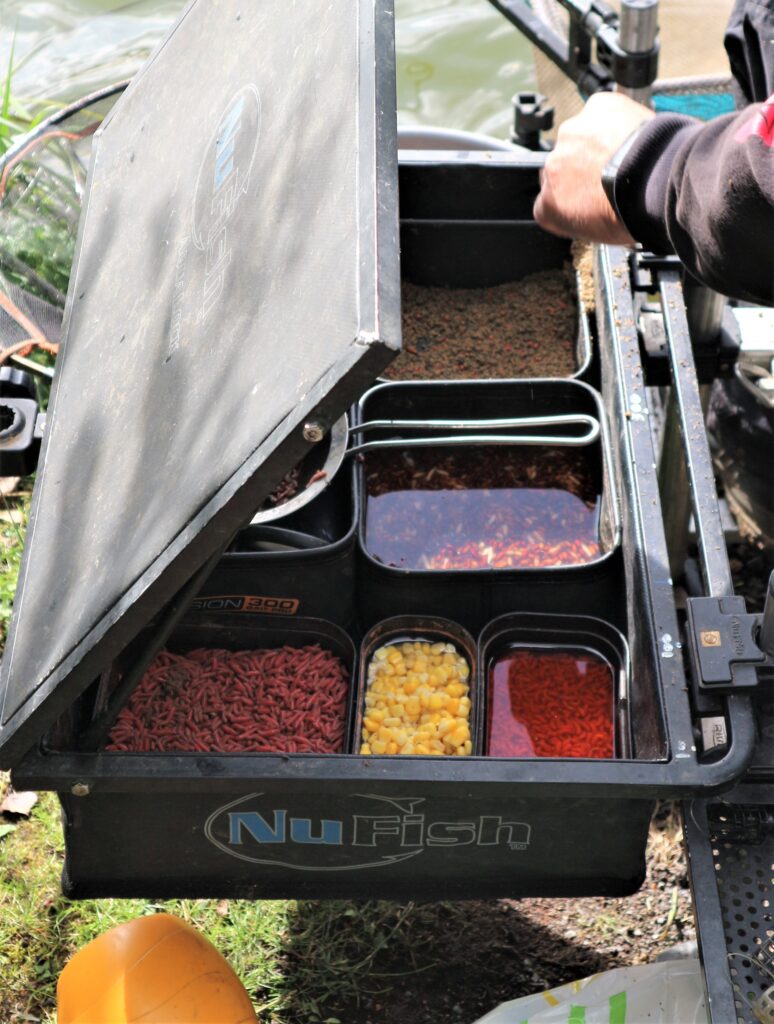

Same angler, different system. This Nu Fish Aqualock side tray has a full lid that can be opened to any angle that suits. It’s basically a big container that protects everything inside, clamping to seat box legs. It’s perfect for those times when you set up your fishing station out in the water. This type of bait tray suits wild venues like reservoirs, tidal rivers and big Irish Loughs, where the margins are shallow and rocky. These places are normally windy and in the case of Ireland you often see all four seasons in one day, weather wise. There are slimmer versions of this tray, again lidded, that can be fitted to the back of seat boxes too. My mate uses one to take extra gear that might be needed when stationed out in the water, such as spare feeders, groundbait, food and drink. It’s a brilliant system, but also on the bulky side, really requiring a barrow to shift everything to your swim. In the latter case these trays can be used for storage purposes too.
SIDE TRAYS
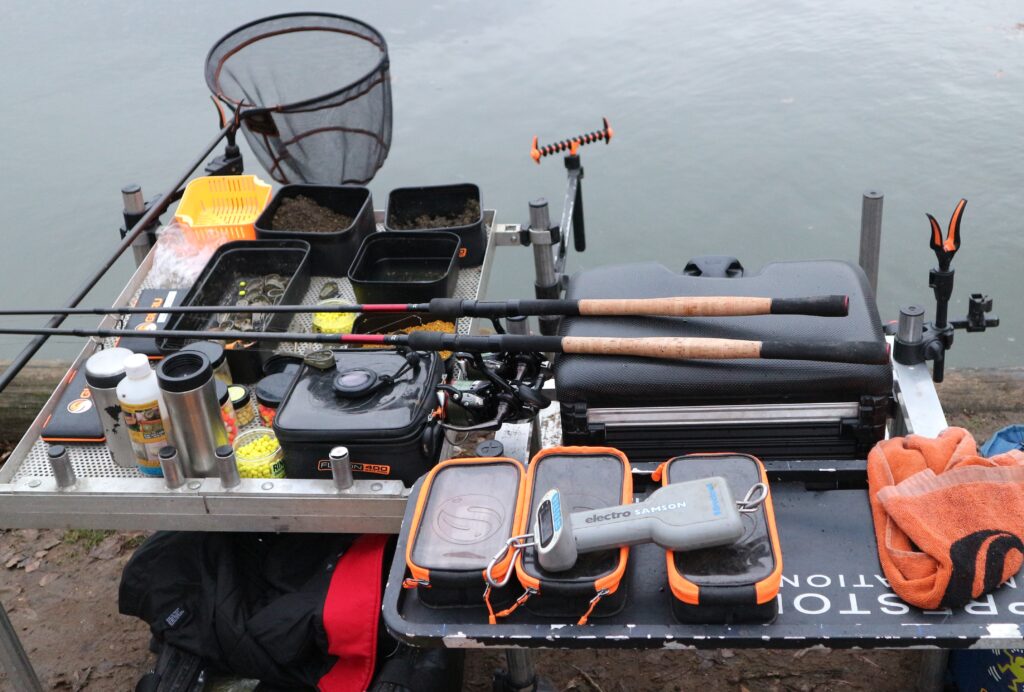

There are plenty of good side trays to choose from these days, big enough to take plenty of bait tubs and any other gear you need to keep close to hand. Some are so big, like the custom made one in the accompanying photograph, they need extra stabilizing legs. Similar to the Nu Fish Aqualock system, you can also get back trays for keeping other stuff out of the water, or away from muddy banks. Also note the new style EVA accessory bags. These have become very popular in recent times for storing many different items and keeping them dry. They can also be used to store baits like dampened pellets, sweetcorn and boilies. You can even buy modular systems, with several of these bags that neatly sit in a larger lidded size. The whole set can be positioned on a side tray and will keep everything well protected. You can even add an ice pack or two in hot weather to keep baits like maggots and worms cool. Boxing clever you might say.










